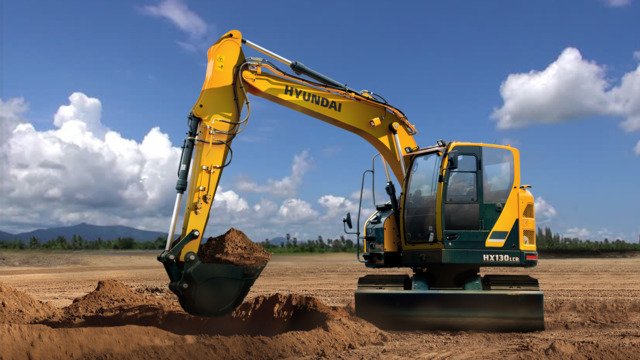Generally Used Building And Construction Devices Components Explained

Excavator Container
When considering the capability of an excavator, the excavator container plays a critical role in its overall performance and performance. The excavator container works as the key add-on for digging, training, and carrying products on building and construction sites - Aftermarket Construction Equipment Parts. These containers can be found in different sizes and shapes, each made for certain jobs such as trenching, grading, or heavy-duty digging
The material of the excavator container is usually made of set steel to withstand the extreme conditions of construction work. The cutting edge of the container is strengthened to boost resilience and cutting performance. Additionally, some containers include changeable teeth or sides to guarantee easy upkeep and prolonged use.
The dimension of the excavator pail directly influences the equipment's productivity (Aftermarket Construction Equipment Parts). Bigger pails are ideal for relocating bulk materials rapidly, while smaller containers offer precision in tight rooms. Picking the ideal pail size for the job handy is important for making the most of effectiveness and completing tasks properly
Excavator Blade
The bulldozer blade is an essential part of a bulldozer's devices, critical for numerous earthmoving and leveling jobs on construction websites. This huge, rounded blade connected to the front of the excavator is developed to push materials like sand, debris, or soil. Excavator blades come in different kinds, such as straight blades for great grading and sloping, U-blades for carrying large tons, S-blades for improved rolling of products, and combination blades for convenience in numerous tasks. The angle and placement of the blade can commonly be adjusted hydraulically, permitting efficient control and precision during procedure.

Crane Hook
The crane hook, just like the excavator blade in its functionality and significance on building sites, serves as an important component of crane equipment for training and delivering heavy materials. This essential part is usually connected to the end of the crane's cable rope to supply a safe and secure connection point for the load. Crane hooks are made to hold up against enormous weights, making sure the safety and security of both the operators and the products being lifted.
The shape of the crane hook is very carefully crafted to avoid the tons from slipping off during transportation. Different kinds of crane hooks are offered to fit various lifting requirements, such as C-hooks, S-hooks, and 3 or 4-prong hooks. The dimension and weight capacity of the crane hook must be carefully matched to the crane's specs to guarantee ideal performance and safety and security.
Normal examination and upkeep of the crane hook are vital to avoid accidents and ensure smooth operations on the building and construction site. Any kind of indications of deterioration ought to be quickly addressed to avoid potential threats during raising procedures.
Backhoe Boom
An essential part of backhoe devices that plays a crucial duty in excavation and material handling is the backhoe boom. The backhoe boom is the large, extendable arm located on the back of the equipment that is my company accountable for training, moving, and excavating. Usually, it is affixed to the rear of the backhoe's framework and can be raised or decreased making use of hydraulic cylinders. The backhoe boom is essential for reaching deep into trenches or high over the ground to carry out various tasks efficiently.
It is often equipped with a container or various other attachments at the end to help in digging, training, and carrying materials. The adaptability of the backhoe boom makes it a useful tool for construction, landscape design, agriculture, and other sectors where excavation and product handling are required.
Dump Vehicle Bed
Placed behind a dump truck chassis, the dump vehicle bed acts as the main container for delivering and dumping numerous products on building websites. These beds come in various shapes and sizes, depending on the certain needs of the job - Aftermarket Construction Equipment Parts. Normally made of steel to withstand rough products and heavy tons, dump vehicle beds are created to be sturdy and durable
Dump truck beds are hydraulically run, permitting them to turn and unload their materials with simplicity. This system directory enables efficient and fast discharging of materials such as crushed rock, sand, dirt, or particles at the wanted place. The capability to quickly transfer products makes dump associate beds vital in building and construction projects where time is essential.
Moreover, discard truck beds can be tailored with functions such as side expansions, tarp systems, and tailgates to enhance their functionality. These additions aid in safeguarding the load throughout transport image source and protecting against splilling, ensuring a secure and efficient transportation process on construction sites.
Verdict
To conclude, recognizing the functions and components of frequently utilized building and construction devices parts is essential for effective job conclusion. Excavator buckets, excavator blades, crane hooks, backhoe booms, and dispose vehicle beds all play essential functions in numerous building and construction jobs. By familiarizing oneself with these devices parts, building specialists can efficiently utilize them to boost performance and productivity on duty site.
The excavator bucket offers as the primary attachment for excavating, lifting, and transporting materials on building and construction sites.The material of the excavator bucket is commonly made of solidified steel to withstand the harsh problems of building and construction work.Excavator blades are essential for creating level surfaces, getting rid of debris, and pushing materials during building and construction tasks.The crane hook, a lot like the bulldozer blade in its performance and importance on building and construction sites, offers as an essential element of crane equipment for training and moving heavy materials.Positioned at the back of a dump vehicle framework, the dump truck bed offers as the primary container for delivering and unloading numerous products on building websites.